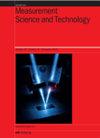基于贝叶斯 CNN 的传感器故障诊断融合框架
IF 3.4
3区 工程技术
Q1 ENGINEERING, MULTIDISCIPLINARY
引用次数: 0
摘要
高速列车上配备的传感器可提供大量数据,有助于对列车状态进行监控。然而,要区分故障是源于机械部件还是传感器本身却很有难度。主要困难在于正常数据和故障数据的偏差以及多源数据内在相关性的不足。在本文中,我们提出了一种基于贝叶斯卷积神经网络(CNN)的融合框架,以提高识别传感器误差的能力。该框架利用小波时频图提取异常特征,利用贝叶斯卷积神经网络从单个传感器获取空间特征,通过双向长短期记忆网络(Bi-LSTM)整合多源特征,并利用注意力机制增强获取的空间和时间特征。最终生成的增强信息可精确识别传感器故障。所提出的特征级融合框架和相关的注意机制有助于发现内在相关性和过滤无关信息。结果表明,我们提出的方法准确率达到 95.4%,比依靠单源传感器特征提取的方法高出 7.8%。本文章由计算机程序翻译,如有差异,请以英文原文为准。
A Bayesian CNN-based Fusion Framework of Sensor Fault Diagnosis
Sensors equipped on the high-speed train provide large amounts of data which contributes to its state monitoring. However, it is challenging to distinguish whether the fault originates from the mechanical component or the sensors themselves. The main difficulties lie in the biased amount of normal and fault data as well as the deficiency of multi-source data’s inherent correlation. In this paper, we propose a Bayesian Convolutional neural networks (CNN)-based fusion framework to enhance the ability to identify sensor errors. The framework utilizes wavelet time-frequency maps to extract abnormal features, employs a Bayesian CNN to obtain spatial features from a single sensor, integrates multi-source features via Bidirectional Long Short-Term Memory Network (Bi-LSTM) and enhances the acquired spatial and temporal features using an attention mechanism. The enhanced information finally generated leads to precise identification of the sensor faults. The proposed feature-level fusion framework and the associated attention mechanism facilitate discovering the inherent correlation and filtering of irrelevant information. Results indicate that our proposed method achieves 95.4% in terms of accuracy, which outperforms methods relying on feature extraction with single-source sensors by 7.8%.
求助全文
通过发布文献求助,成功后即可免费获取论文全文。
去求助
来源期刊

Measurement Science and Technology
工程技术-工程:综合
CiteScore
4.30
自引率
16.70%
发文量
656
审稿时长
4.9 months
期刊介绍:
Measurement Science and Technology publishes articles on new measurement techniques and associated instrumentation. Papers that describe experiments must represent an advance in measurement science or measurement technique rather than the application of established experimental technique. Bearing in mind the multidisciplinary nature of the journal, authors must provide an introduction to their work that makes clear the novelty, significance, broader relevance of their work in a measurement context and relevance to the readership of Measurement Science and Technology. All submitted articles should contain consideration of the uncertainty, precision and/or accuracy of the measurements presented.
Subject coverage includes the theory, practice and application of measurement in physics, chemistry, engineering and the environmental and life sciences from inception to commercial exploitation. Publications in the journal should emphasize the novelty of reported methods, characterize them and demonstrate their performance using examples or applications.
 求助内容:
求助内容: 应助结果提醒方式:
应助结果提醒方式:


